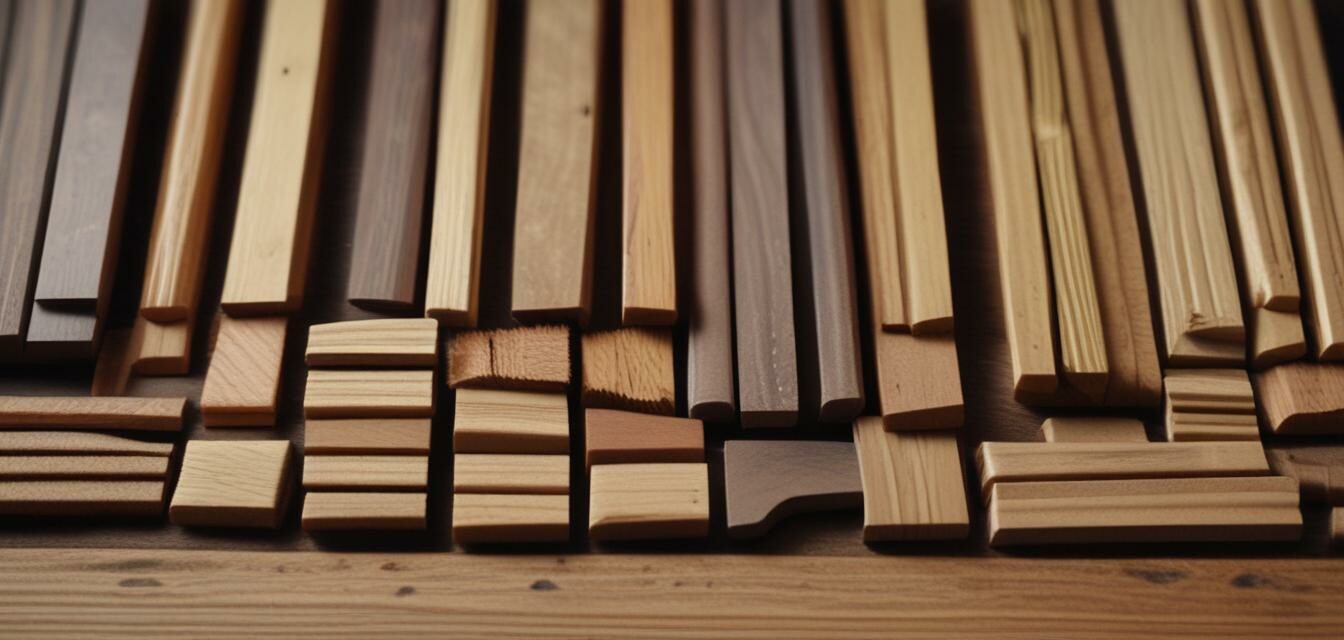
How to Select Wood for Your Specific Project
Key Takeaways
- Understand the different wood types and their characteristics.
- Consider the purpose of your project when selecting wood.
- Evaluate the grain patterns and colors to match your design.
- Learn about the durability and maintenance needs of different woods.
- Explore woodworking resources for detailed guidance.
Choosing the right wood for your specific project is crucial for achieving the desired results in your craftsmanship. From durability and aesthetics to ease of workability, various wood types cater to diverse needs. In this guide, we'll walk you through the essential factors to consider when selecting wood, ensuring your projects are not only beautiful but also built to last.
Understanding Wood Types
Wood comes in two primary categories: hardwood and softwood. Each type has unique characteristics that make it suitable for specific projects. Let's explore these categories in more detail.
| Wood Type | Characteristics | Common Uses |
|---|---|---|
| Hardwood | Dense, durable, often with intricate grain patterns | Furniture, cabinets, flooring |
| Softwood | Lightweight, easier to work with, fewer intricate patterns | Framing, outdoor projects, inexpensive furniture |
1. Selecting Wood Based on Project Needs
When selecting wood, it's essential to understand the specific requirements of your project. Here are some tips:
- Furniture Projects: Hardwoods like oak, maple, and cherry are ideal for furniture due to their durability and aesthetic appeal.
- Outdoor Projects: Cedar and redwood are excellent choices for outdoor use because they resist moisture and decay.
- Decorative Projects: Consider exotic woods for their unique colors and grains, perfect for accent pieces.
- Beginner-Friendly Projects: Pine is a great softwood option for beginners, as it is affordable and easy to work with.
2. Considering Grain and Color
The grain pattern and color of wood can significantly impact the aesthetics of your project. Here are a few points to consider:
- Grain Patterns: Look for interesting grain patterns to enhance the beauty of your project. Quartersawn oak, for example, offers stunning ray fleck patterns.
- Color Matching: Consider color coordination with existing furniture or other materials in your design.
- Finishing: Remember that wood will look different after finishing. Test a small area before committing to a full project.
3. Assessing Wood Durability and Maintenance
Durability varies by wood type, and some require more maintenance than others. Here’s a quick look at durability:
| Wood Type | Durability | Maintenance Requirements |
|---|---|---|
| Oak | High | Low - regular cleaning and occasional refinishing |
| Pine | Medium | Medium - seal to prevent dents and scratches |
| Cedar | High | Low - natural oils help prevent decay |
Resources for Further Learning
To enhance your knowledge about wood selection and woodworking techniques, consider these valuable resources:
- Wood types and their uses - Learn the differences between various wood types.
- Finishing and staining wood projects - Tips to protect and beautify your wood projects.
- Advanced woodworking techniques - Take your skills to the next level with advanced methods.
- DIY woodworking project kits - Explore kits that simplify your woodworking journey.
- Woodworking tool maintenance - Keep your tools in shape for better results.
Featured Products for Your Woodworking Needs
Here are some excellent products to help you make informed decisions about your woodworking projects:
The Essential Wood Book: The Woodworker’s Guide to Choosing and Using Lumber
A comprehensive guide to selecting the right lumber for your projects, filled with practical advice and illustrations.
Learn MoreBookcases, Cabinets & Built-Ins
Explore creative ideas and practical plans for building stunning bookcases, cabinets, and built-ins at home.
Learn MoreTips for Beginners
- Start with simpler projects to build your skills and confidence.
- Choose a wood type that is forgiving and easy to work with.
- Invest in quality tools to enhance your craftsmanship.
- Practice safe woodworking habits, especially when using power tools.
Final Thoughts
Choosing the right wood for your projects can significantly influence your craftsmanship's quality and longevity. By understanding the various wood types, their characteristics, and how they align with your project requirements, you can ensure successful results in your woodworking endeavors. Remember to leverage the resources available to you, and don't hesitate to explore the recommended products that can enhance your journey.





